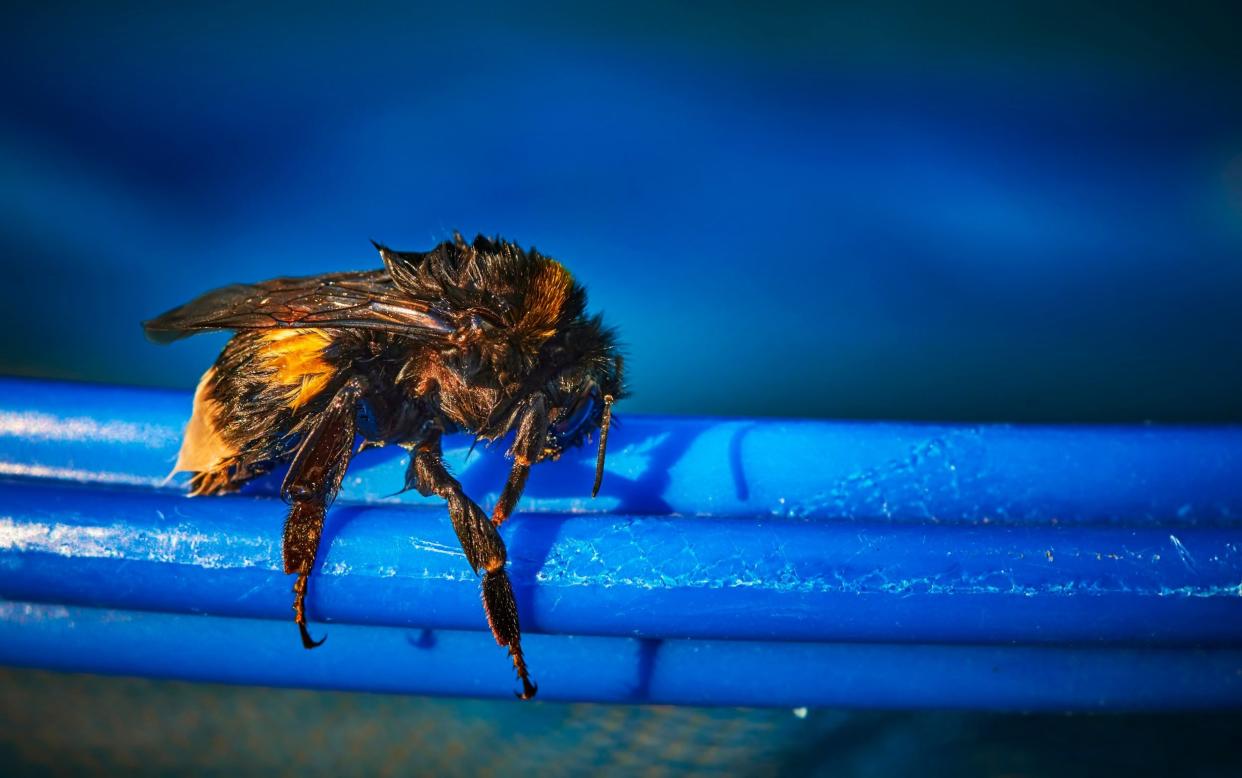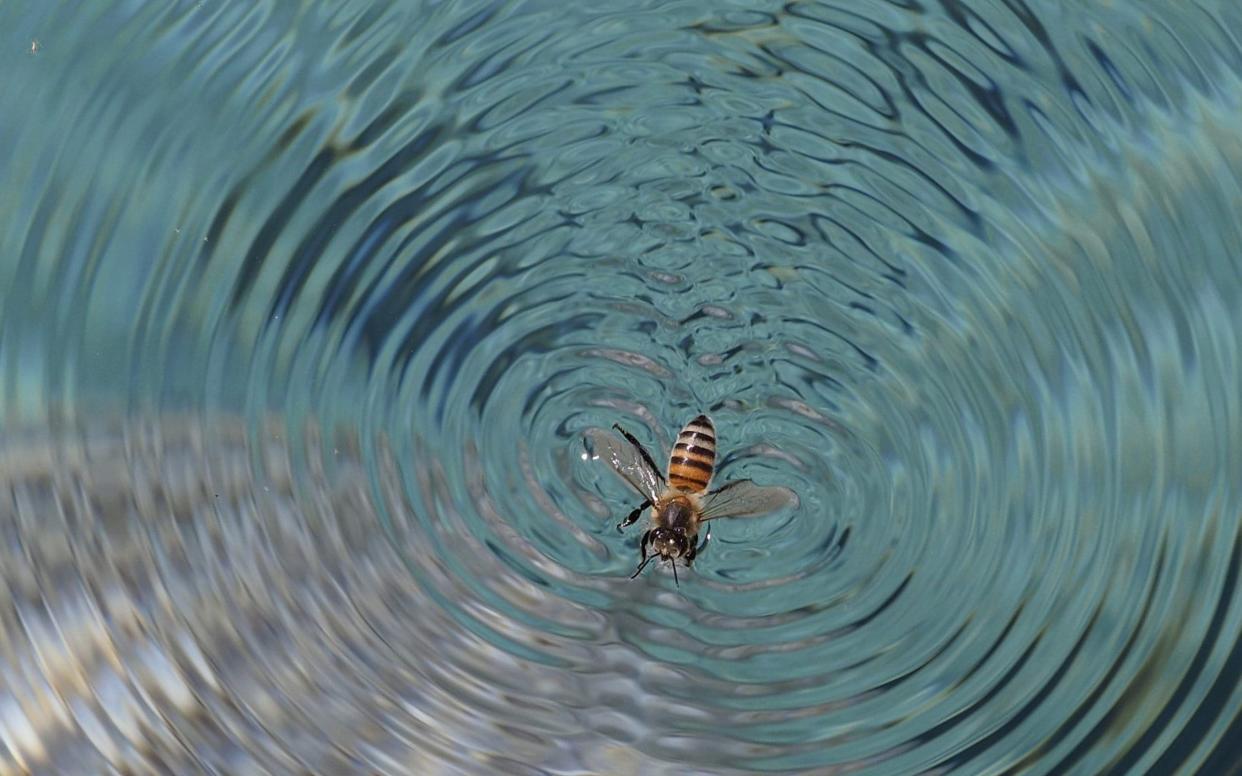Bees can survive for a week underwater

Bees can survive underwater for up to a week, scientists have found, after accidentally submerging some of the insects in a previous experiment.
A 2022 study looking at the impact of pesticides on queen bees hibernating underground went awry when “an experimental oversight led to the inadvertent accumulation of water” on dormant bumblebee queens.
Condensation build-up in a fridge dripped into the tubes housing sleeping queens leaving them submerged.
The scientists, from the University of Guelph in Canada, were surprised to find the mishap was not fatal, because many survived.
A follow-up experiment designed to specifically investigate this unexpected observation, which had never been seen before in bees, looked at the underwater survival in more detail.
The academics gathered 147 queens from a large lab colony of the common eastern bumblebee and they were all placed into an individual tube with damp soil.
Air holes were made in the lids and the tubes were kept in dark, cool conditions to mimic being underground.
A control group of 17 bees were kept in these dry tubes with no extra water added, and the rest were left to either float in an extra 20ml of water or were kept submerged.
Bees were left to float or kept underwater for eight hours, 24 hours or seven days, with 21 bees in each of the six flooding scenarios.
Nine in 10 of the bees survived the submersion, the study found, including 17 of the 21 most intensely submerged bees that were plunged underwater for seven consecutive days.
Data also show that heavier and bigger bees were more likely to survive, and the researchers say non-queen bees would not be able to survive submersion.
It remains unknown exactly how the bees survive underwater while in the dormant stage known as diapause.
The authors of the paper, published in the Royal Society journal Biology Letters, speculate that the underwater survival ability could be a perk of how bees breathe.
Dr Sabrina Rondeau, the study author, told The Telegraph: “Hibernating bumblebee queens have very low metabolism, which means that they also have low oxygen requirements.
“They do not need a lot of oxygen at all to survive. As such, they may be able to rely on the air left in their trachea (similar to lungs in humans).”
Other theories from the scientists suggest the survival could be down to the fact that bees breathe not through lungs but rather through tiny holes along their body that facilitate sporadic bouts of gas exchange – the release of carbon dioxide and intake of oxygen.

Unlike in humans, where breathing is constant and unfaltering, in bees this is done in fits and bursts to prevent the insect losing too much water.
The scientists say that this could also mean the bees can keep their tiny breathing holes, known as spiracles, closed when underwater to stop water from entering and drowning them.
They add that even when these channels are open, it is unlikely that water will flood into a bee’s abdomen because the holes are so tiny and their skin is so hydrophobic that not much would seep in.
The researchers also say that it may be possible that tiny air bubbles surround the spiracles and provide just enough oxygen to the low-energy state bee by acting as “physical gills”.
Dr Rondeau said: “Bumblebee queens are able to survive periods of inundation of up to a week when hibernating underground.
“It’s encouraging to know that if flooding events are increasing in the future (as they are predicting to do with climate change), this might not have too much of an effect on bumblebee queen populations.”


